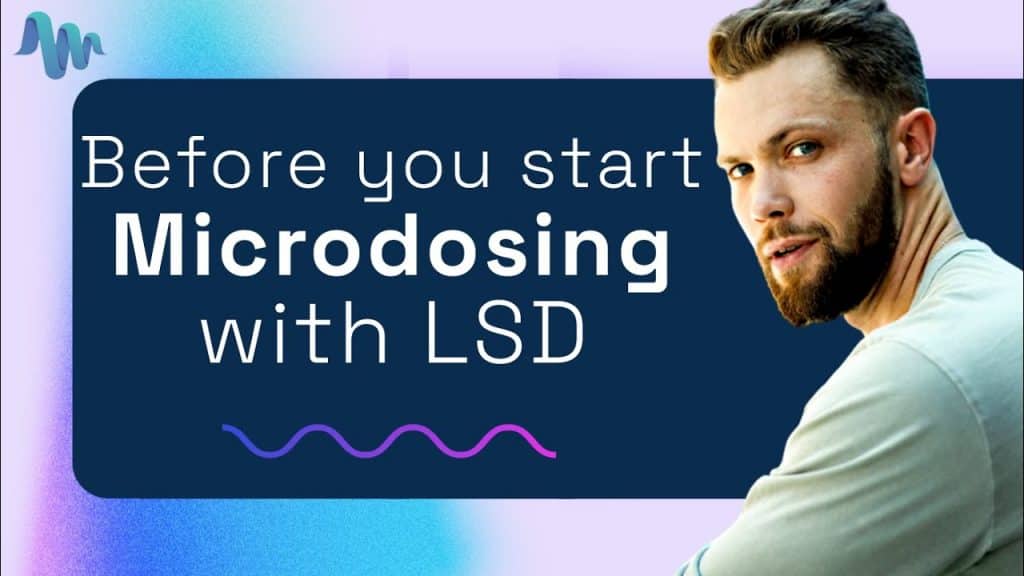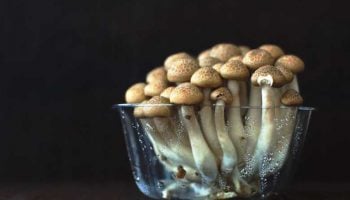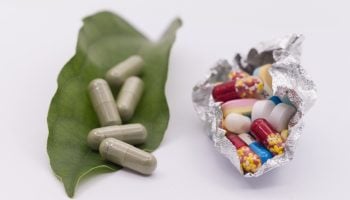
In recent years, microdosing psychedelics has become a uniquely attractive pathway to personal evolution. Those seeking to boost the quality of their day-to-day lives by enhancing their emotional and procedural performance now have powerful tools to work with and access to the understanding of how to wield them.
The potential benefits of microdosing are well known, its allure reasonable. Still, taking that initial plunge can be a challenging prospect, especially for those who have had little experience with psychedelics. A host of concerns throws off many would-be biohackers, the particularly daunting one being: What are the potential consequences of regular and long-term ingestion of psychedelics?
Because microdosing research is just about to unfold, it is vital to retain a healthy, empirical pragmatism in this field, for the sake of objectively understanding the benefits and risks involved. Microdosing simply hasn’t been around for long enough to withstand proper longitudinal scrutiny. It’s also an activity engaged in by a subculture of a subculture – the available pool of subjects who have been integrating psychedelics into their daily lives for long periods of time, although consistently growing, is much smaller than the already small pool of regular psychedelic users.
For now, since all we have to work with is anecdotal evidence, it needs to be presented in an objective manner so those interested can make informed decisions.
Why microdose?
Let’s start with what drives people to try microdosing – the practice of taking minute doses of LSD and psilocybin several times weekly. The doses being sub-perceptual, they don’t cause any significant changes in consciousness; however, they are known to boost focus and creativity, enable changes in perspective which aid in problem-solving, and create positive shifts in overall mood and outlook on life.
The exact mechanism of these benefits is currently not clear. LSD and psilocybin are agonists for various receptors, including those for glutamate, dopamine, and, most importantly, the 5-HT2A serotonin receptor.
This effect that both substances have in common seems to be responsible for glutamate cell activity in the frontal cortex. Going further, scientists speculate that this transmission is the cause of the “higher-level cognitive, perceptual, and affective distortions” we experience under the effect. Short of perceiving hallucinations, these changes should still be present to a more subtle degree when microdosing.
Another important aspect of these psychedelics’ effects on the brain is their ability to reset the typical control systems of cognition. Various studies have highlighted the effects that LSD and psilocybin have on the default mode network, or DMN; a system in the brain that has been shown to be overactive in depression. The ability of psychedelics to reset this system correlates with the creative and spiritual insights that they induce. It’s likely that microdosing allows us to access creative states more easily through a consistent dampening of the DMN.
Positive effects of microdosing
Microdosers often report increases in creativity, productivity, focus, empathy, and sociability. But as well as these positive changes, microdosing can also alleviate mental health conditions. There are hundreds of reports of people microdosing to successfully treat depression. We’ve also compiled evidence of people using psychedelic microdosing to treat ADHD more effectively than typical medications.
Our microdosing course goes into more detail about the potential uses of microdosing, compiling anecdotes from users with expert interviews.
Can microdosing be addictive?
Looking at these potential improvements, the first major concern surfaces: if we become better humans while microdosing, why would we ever want to stop? This outlines the principal argument for many of those unwilling even to give psychedelics a try – worries about becoming addicted to their effects. And, while it’s been proven that LSD and psilocybin don’t cause physiological addiction, we can’t claim that psychological dependence on the confidence and flow that microdosing provides isn’t a possibility.
Experiencing full-on trips with either of these substances is usually followed by a clear sense of mental and spiritual exhaustion – a feeling that it’s been enough for a while. Although certain users take them on a much more frequent basis, the majority realize that they shouldn’t be abused and don’t have a desire to push the limits past reason.
However, as microdosing does not induce immediate spiritual revelations, the potential for abuse becomes a more tangible issue. This is where discipline and a structured regimen need to kick in. In our extensive microdosing course, we lay out the optimal techniques for microdosing to help you build a lifestyle that will continue beyond your microdosing regimen.
Drawbacks of microdosing
Among the multitude of beneficial effects of microdosing, there are also reports of undesirable effects to consider. While they are rare and often may not hold as much weight as the perks, it is important to be aware of them and retain objectivity in analyzing your own experiences.
Some microdosers report that their anxiety levels can be increased on microdosing days. This is often due to using a slightly-too-high dosage, or microdosing on days with too much background stress. Psychedelics have been known to induce mania, which could manifest during long microdosing regimens. People with anxiety disorders should be especially cautious of this risk, and consider starting on very low doses or only microdosing in ideal circumstances.
Others report that regular microdosing can negatively affect sleep patterns and digestion, and could amplify mood swings. In all cases where negative effects such as these are experienced, we recommend lowering the dose and perhaps taking a break from your microdosing regimen if the effects persist.
Physical health
An additional concern is posed by the yet unknown potential health risks involved with microdosing over long stretches of time. Specifically, it’s theoretically possible that microdosing could pose a risk for your cardiac health. The only true evidence of a heart risk of any psychedelic comes from studies of MDMA, but there could be a connection to the psychedelics we’re discussing here.
In short, here are the facts we have:
- Frequent (several times per week) and high-dose use of MDMA has been linked to developing valvular strands, which can lead to Valvular Heart Disease.
- This happens due to the repeated activation of the 5-HT2B serotonin receptor on the heart.
- There is no evidence of frequent low-dose use causing similar consequences, but it is safest to assume that it might.
- There is no evidence of whether psilocybin and LSD can have similar effects, but we know that they also activate the 5-HT2B receptor – what we don’t know is how similar the effects are to those of MDMA.
Although there is no conclusive evidence that long-term microdosing could be harmful, there is certainly enough reason to be cautious. While the consensus is that occasional use of LSD and psilocybin (and even MDMA) should be perfectly fine, there is no way to be certain about the potential effects of prolonged use, even with sub-perceptual doses.
This is why we recommend microdosing for a maximum of three months at a time, and dispersing microdosing periods throughout the year. Those already suffering from heart issues, those on psychiatric medications, and those with predispositions for mania (such as sufferers of bipolar, psychosis or schizophrenia) should avoid microdosing altogether, or otherwise exercise extreme caution.
Moderation is the key
All of this is to say that microdosed psychedelics can be incredible allies in our lives, but that the practice must be approached with caution and an openness to reevaluation as new empirical findings pour in.
As the battles are being fought to legalize substances like MDMA and psilocybin for therapeutic use, we have no doubt that critical studies aimed at ascertaining their benefits and drawbacks will be conducted, but that there will necessarily be ample attempts at lobbying against the push for legalization. In the age of false information, it is especially important to remain vigilant and follow exclusively unbiased, peer-reviewed facts, versus getting drawn into beliefs by grandiose statements, be they positive or negative.
Looking for more?
We dive deeper into microdosing (and how to optimize the best protocol for your personal goals) in our online microdosing course. Learn more about avoiding risks and optimizing your protocol here, in our safety guide.







Is there any evidence that they are safe rather than no evidence that they are not safe?
Albert Hofmann lived to be 102 and claimed to have micro-dosed for the last few decades of his life! However, this cannot be used as solid “evidence” from a scientific point of view. Unfortunately, we don’t know too much yet. From the little we know, through anecdotal reports, people seem to be functioning OK – but that does not mean that there are no insidious long-term effects. We will find out as more individuals report their long-term observations of their personal use and as more studies unfold.
Hundreds of years of use by native tribes (worldwide) and todays current tribe of users tells me it’s a ‘safe’ option to consider. Society has been lied to so that the masses feel insecure enough to avoid them. Like everything, they should be respected and used in moderation. Anything in excess will be harmful, balance is the key.
I’ve been doing it for best part of 2 decades and I SUFFER with too many things to say pain/mentally you get the picture. Life’s shite nothing changes until it does and you change it. I’m pro microdosing and just dosing when I have a break and want an extra happy pretty day but I would not advise people not to that unless you are in the right time and place and your most perfect people(safe zone) just 1 of the small(not) things i suffer with bipolar but I’m in control on LSD as it keeps me happy and up gets my face out my pillow and makes me smile again makes me want to get up and enjoysy day but I also smoke/vape pot alongside. I truly believe it’s should be legal so people could at least try supervised of course
Please think about your dear ones when you feel the urge. You are needed. You are important for someone.
its really silly to compare the health effect of lsd/psilocybin MICROdose to a high dose of MDMA taken several times a week!!! quite misleading…
Cool!
Only the problem is that all the LSD in the world nowdays is fake.
started microdosing several years back. began with lsd first dose was too much and had to leave work (was working at height , (have taken enough psychedelic s in the past to know,)and could have been dangerous)
Moved on from that to growing my own cubes, making capsules including some lions mane in each but the main thing is I’ve since and without trying, stopped smoking, sugar, caffeine, and milk.
also found mushrooms work better for microdosing than lsd and dome are better than others – i am now thinking I’m ready for dmt